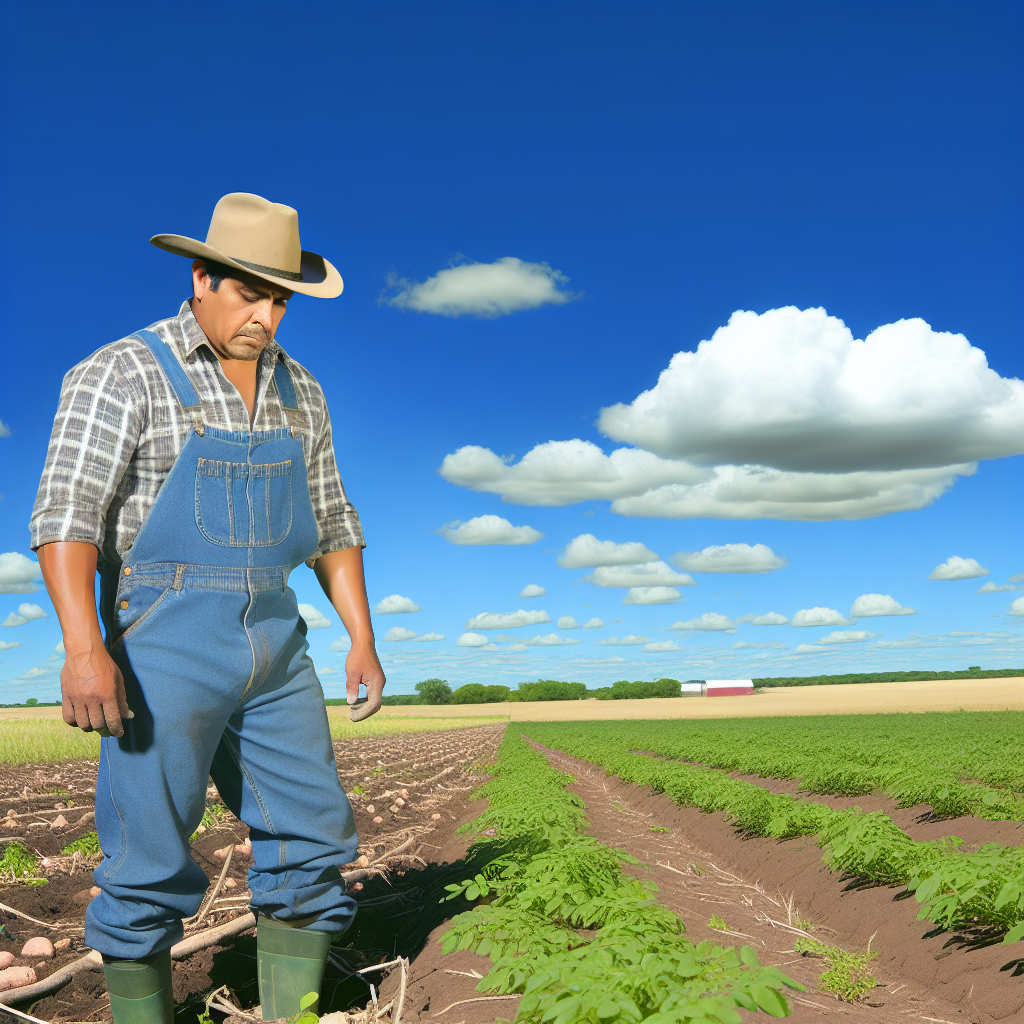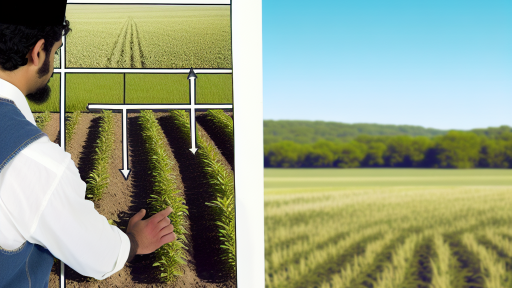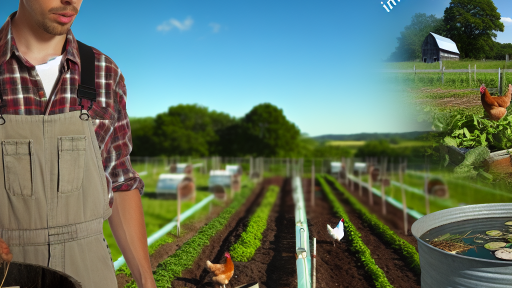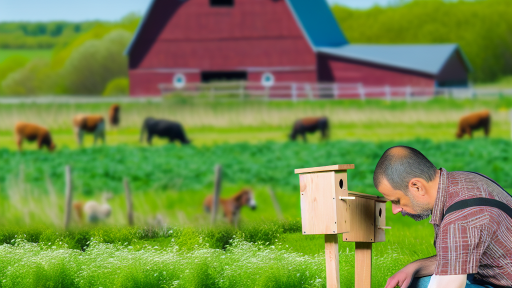Understanding the Importance of Soil Moisture Conservation
Significance of Soil Moisture
Soy moisture plays a crucial role in agriculture.
It affects plant growth and crop yield significantly.
Moreover, healthy soil moisture levels enhance nutrient availability.
They also support beneficial microbial activity in the ground.
Thus, maintaining optimal soil moisture is indispensable for farmers.
Impacts of Soil Moisture Conservation
Conserving soil moisture leads to sustainable farming practices.
This approach helps prevent soil erosion and degradation.
It also reduces reliance on irrigation systems.
Farmers can save on water costs and energy usage by conserving moisture.
Furthermore, it enhances resilience to extreme weather conditions.
Approaches to Enhance Soil Moisture Retention
Several techniques exist for improving soil moisture retention.
These methods foster healthier soil structures and ecosystems.
- Cover crops can shield the soil from evaporation.
- Mulching retains moisture and regulates temperature.
- Reducing tillage minimizes soil disturbance.
- Organic matter improves soil structure and water-holding capacity.
- Contour plowing helps to trap water on sloped fields.
Each technique contributes to a more sustainable farming operation.
Long-Term Benefits of Soil Moisture Conservation
Investing in soil moisture conservation pays off in the long run.
This practice boosts crop productivity over time.
Transform Your Agribusiness
Unlock your farm's potential with expert advice tailored to your needs. Get actionable steps that drive real results.
Get StartedIt also improves soil resilience against climate variability.
Ultimately, farmers can achieve greater food security.
Assessing Soil Type and Its Influence on Water Retention
Understanding Soil Types
Soyl types significantly impact water retention capabilities.
Farmers can identify soil types through texture and composition tests.
Sandy soils allow for quick drainage, which may lead to quicker drying.
Clay soils, in contrast, hold water effectively but drain poorly.
Loamy soils strike a balance, retaining moisture while allowing drainage.
The Role of Soil Structure
Soil structure directly influences water retention and movement.
Well-structured soils improve water infiltration and retention.
Poorly aggregated soils may suffer from compaction issues.
Compaction reduces pore spaces, limiting water absorption and root growth.
Evaluating Soil Organic Matter
Organic matter plays a crucial role in water retention.
Soils rich in organic matter better retain moisture.
Incorporating compost or green manure can enhance organic content.
Farmers should regularly test soil for organic matter levels.
Assessing pH Levels and Their Effect
Soil pH affects nutrient availability and microbial activity.
Optimal pH levels usually range from 6.0 to 7.5 for most crops.
Soil amendments can help adjust pH levels.
Improving pH can lead to better soil structure and water retention.
Implications for Farming Practices
Understanding soil type allows farmers to implement better management practices.
Farmers can choose appropriate crops that suit their soil conditions.
Effective management enhances both crop yield and sustainability.
Moreover, tailored irrigation and fertilization strategies can minimize water loss.
Ultimately, assessing soil type leads to improved soil health and productivity.
Showcase Your Farming Business
Publish your professional farming services profile on our blog for a one-time fee of $200 and reach a dedicated audience of farmers and agribusiness owners.
Publish Your ProfileImplementing Mulching Techniques for Moisture Retention
Understanding Mulching
Mulching involves covering soil with materials to reduce moisture loss.
This technique creates a barrier between the soil and the elements.
Consequently, it helps retain water, promoting healthier crops.
Choosing the Right Mulch Materials
Farmers can utilize natural materials like straw and wood chips for mulching.
Alternatively, synthetic options such as plastic sheeting are also effective.
Each material offers unique benefits for moisture retention.
Organic Mulches
Organic mulches break down over time, enriching the soil.
They improve soil structure and promote microbial activity.
Moreover, they can enhance the aesthetic appeal of your farm.
Inorganic Mulches
Inorganic mulches, like plastic, prevent weed growth effectively.
They reflect light, aiding in maintaining optimal soil temperatures.
Additionally, they do not decompose like organic options.
Applying Mulch Effectively
Apply mulch at a depth of three to four inches for best results.
Ensure even coverage around plant bases to maximize retention.
Keep mulch a few inches away from plant stems to avoid rot.
Timing Your Mulching
Apply mulch before the growing season starts for optimal benefits.
This prevents rapid evaporation and minimizes soil temperature fluctuations.
Furthermore, during periods of drought, adding more mulch can be advantageous.
Maintaining Your Mulch
Periodically check mulch for signs of decomposition.
Refresh or replace mulch as necessary to maintain effectiveness.
Regular maintenance ensures continued moisture retention and soil health.
Learn More: Innovative Waste Management Ideas for Farmers
The Role of Cover Crops in Enhancing Soil Moisture
Introduction to Cover Crops
Cover crops play a vital role in agriculture.
They help improve soil moisture retention significantly.
Farmers often use these crops during off-seasons.
Additionally, they protect the soil from erosion.
Types of Cover Crops
Various types of cover crops exist for moisture conservation.
Legumes, such as clover and vetch, fix nitrogen in the soil.
Grasses like ryegrass boost soil structure and water absorption.
Broadleaf crops contribute organic matter and enhance moisture levels.
Benefits of Cover Crops
One main benefit of cover crops is moisture retention.
They reduce the evaporation of water from the soil.
Furthermore, cover crops enhance soil microbial activity.
This activity improves nutrient cycling and soil health.
Implementing Cover Crops Effectively
Farmers need a strategy for implementing cover crops.
They should choose appropriate species based on climate.
Timing of planting is crucial for successful establishment.
Additionally, they must consider crop rotation practices.
Challenges and Considerations
Cover crops can present challenges in certain conditions.
Some crops may compete with main crops for nutrients.
Showcase Your Farming Business
Publish your professional farming services profile on our blog for a one-time fee of $200 and reach a dedicated audience of farmers and agribusiness owners.
Publish Your ProfileFarmers should monitor their fields closely for these issues.
It’s essential to tailor cover crop choices to local conditions.
Future Directions in Cover Crop Research
Cover crops represent a sustainable agricultural practice.
They can significantly enhance soil moisture conservation.
Farmers should continue exploring innovative uses for cover crops.
Future research can provide deeper insights into these benefits.
You Might Also Like: Sustainable Crop Rotation Plans for Modern Farmers
Irrigation Practices That Promote Water Savings
Adopt Efficient Irrigation Techniques
Drip irrigation delivers water directly to the roots of plants.
This method reduces evaporation and runoff significantly.
Consider using soaker hoses to maintain consistent moisture levels.
These strategies minimize water waste while maximizing crop health.
Implement Smart Scheduling
Irrigate during early morning or late evening hours.
This timing reduces water loss due to evaporation.
Use soil moisture sensors to determine precise watering needs.
This approach ensures that water is applied only when necessary.
Practice Rainwater Harvesting
Collect rainwater through gutters and storage tanks.
This method provides an alternative water source for irrigation.
Use filtered rainwater for sensitive plants to prevent contamination.
Maintain Equipment Regularly
Inspect and repair leaks in irrigation systems promptly.
Regular maintenance increases efficiency and prolongs system life.
Moreover, calibrate irrigation equipment to apply the correct amount of water.
Utilize Mulching Techniques
Apply organic mulch around plants to retain soil moisture.
This practice also suppresses weeds that compete for water.
Using mulch improves soil health and enhances water conservation.
Consider Crop Rotation and Cover Cropping
Rotate crops to improve soil structure and moisture retention.
Plant cover crops during off-seasons to reduce erosion.
These practices help maintain soil moisture levels throughout the year.
Educate Yourself and Others
Stay informed about the latest irrigation technology and practices.
Attend workshops and training related to water conservation.
Sharing knowledge with peers in the farming community can lead to better practices.
You Might Also Like: Designing Farm Layouts for Optimal Water Use

Utilizing Rainwater Harvesting Systems on Farms
Understanding Rainwater Harvesting
Rainwater harvesting involves collecting and storing rain for agricultural use.
This method reduces dependency on traditional water sources.
Farmers can use systems like barrels, tanks, and cisterns.
The goal is to manage water resources effectively.
Benefits of Rainwater Harvesting
Rainwater harvesting offers multiple advantages for farmers.
Firstly, it lowers water costs significantly.
Secondly, it enhances water availability during dry seasons.
Moreover, it decreases soil erosion and runoff.
Finally, it supports sustainable farming practices.
Showcase Your Farming Business
Publish your professional farming services profile on our blog for a one-time fee of $200 and reach a dedicated audience of farmers and agribusiness owners.
Publish Your ProfileSteps to Implement a Rainwater Harvesting System
Farmers can easily implement rainwater harvesting with proper planning.
Start by assessing the farm’s water needs and collection area.
Then, select suitable storage options based on capacity requirements.
Install gutters and downspouts to direct water into storage systems.
Regular maintenance is crucial to ensure optimal performance.
Best Practices for Rainwater Conservation
To maximize rainwater harvesting, follow these best practices.
- Choose native plants to reduce irrigation needs.
- Implement mulching to retain soil moisture.
- Use drip irrigation for efficient water application.
- Monitor and manage water quality regularly.
- Encourage community involvement in water conservation efforts.
Discover More: How Farmers Can Implement Carbon Sequestration
Adopting Conservation Tillage Practices
Understanding Conservation Tillage
Conservation tillage is a farming practice that conserves soil moisture.
It limits how much soil is disturbed during planting.
This method helps retain water and nutrients in the soil.
Benefits of Conservation Tillage
Implementing conservation tillage offers numerous benefits.
First, it reduces erosion significantly.
Second, it improves soil structure and fertility.
Additionally, it enhances moisture retention in dry periods.
Types of Conservation Tillage
Farmers can choose from various conservation tillage methods.
No-till farming involves planting without disturbing the soil.
Reduced tillage uses light tillage before planting.
Strip-till keeps soil intact in certain rows for planting.
Implementing Conservation Tillage
To adopt these practices, start with planning your fields.
Assess the soil type and moisture levels in your area.
Select the right crops that suit conservation tillage methods.
Tools and Equipment
Investing in the right tools is essential for conservation tillage.
No-till drills help place seeds effectively in undisturbed soil.
Additionally, consider using cover crops to enhance soil health.
Overcoming Challenges
Some farmers may face challenges with conservation tillage.
Weeds can become a problem if not managed properly.
Implement effective weed control strategies to combat this issue.
Success Stories
Many farmers have successfully adopted conservation tillage.
For instance, Emily from Green Valley Farm reports lower soil erosion.
Similarly, Mike from Sunny Acres has noticed improved crop yields.
Continuing Education and Support
Farmers should seek ongoing education about conservation practices.
Join local agricultural organizations for support and resources.
Attend workshops and training sessions on effective tillage practices.
The Benefits of Soil Amendments to Improve Moisture Holding Capacity
Enhancing Soil Structure
Soyl amendments significantly enhance soil structure.
Improved soil structure allows for better air and water movement.
Additionally, it helps retain moisture during dry seasons.
Increasing Organic Matter
Incorporating organic matter boosts soil’s moisture-holding capabilities.
Organic materials like compost enrich soil health and fertility.
They also support beneficial microbial activity essential for moisture retention.
Reducing Erosion
Using soil amendments can help reduce erosion effectively.
Showcase Your Farming Business
Publish your professional farming services profile on our blog for a one-time fee of $200 and reach a dedicated audience of farmers and agribusiness owners.
Publish Your ProfileThey improve the soil’s cohesion and compactness.
This quality assists in protecting valuable topsoil from being washed away.
Improving Water Absorption
Soyl amendments contribute to better water absorption rates.
They create a network of pores that allow water to penetrate more deeply.
Consequently, plants can access moisture more efficiently.
Types of Effective Soil Amendments
- Compost enhances both soil structure and nutrient content.
- Peat moss increases moisture retention capabilities.
- Gypsum improves soil drainage and reduces salinity.
- Worm castings enrich soil with nutrients and moisture.
Application Tips
Carefully assess soil conditions before application.
Determine the suitable type and quantity of amendment needed.
Incorporate amendments into the top layer of the soil for best results.
Regular assessment and adjustment can optimize moisture retention.
Additional Resources
What is Sustainable Agriculture? | Union of Concerned Scientists
Cover Cropping to Improve Climate Resilience | USDA Climate Hubs




